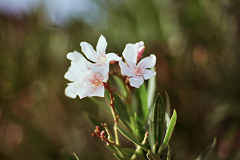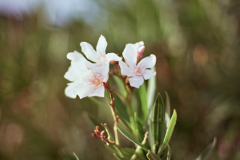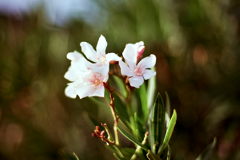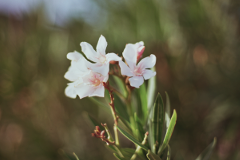1
2
3
4
5
6
7
8
9
10
11
12
13
14
15
16
17
18
19
20
21
22
23
24
25
26
27
28
29
30
31
32
33
34
35
36
37
38
39
40
41
42
43
44
45
46
47
48
49
50
51
52
53
54
55
56
57
58
59
60
61
62
63
64
65
66
67
68
69
70
71
72
73
74
75
76
77
78
79
80
81
82
83
84
85
86
87
88
89
90
91
92
93
94
95
96
97
98
99
100
101
102
103
104
105
106
107
108
109
110
111
112
113
114
115
116
117
118
119
120
121
122
123
124
125
126
127
128
129
130
131
132
133
134
135
136
137
138
139
140
141
142
143
144
145
146
147
148
149
150
151
152
153
154
155
156
157
158
159
160
161
162
163
164
165
166
167
168
169
170
171
172
173
174
175
176
177
178
179
180
181
182
183
184
185
186
187
188
|
# Imaging
[](https://godoc.org/github.com/disintegration/imaging)
[](https://travis-ci.org/disintegration/imaging)
[](https://coveralls.io/github/disintegration/imaging?branch=master)
[](https://goreportcard.com/report/github.com/disintegration/imaging)
Package imaging provides basic image processing functions (resize, rotate, crop, brightness/contrast adjustments, etc.).
All the image processing functions provided by the package accept any image type that implements `image.Image` interface
as an input, and return a new image of `*image.NRGBA` type (32bit RGBA colors, not premultiplied by alpha).
## Installation
go get -u github.com/disintegration/imaging
## Documentation
http://godoc.org/github.com/disintegration/imaging
## Usage examples
A few usage examples can be found below. See the documentation for the full list of supported functions.
### Image resizing
```go
// Resize srcImage to size = 128x128px using the Lanczos filter.
dstImage128 := imaging.Resize(srcImage, 128, 128, imaging.Lanczos)
// Resize srcImage to width = 800px preserving the aspect ratio.
dstImage800 := imaging.Resize(srcImage, 800, 0, imaging.Lanczos)
// Scale down srcImage to fit the 800x600px bounding box.
dstImageFit := imaging.Fit(srcImage, 800, 600, imaging.Lanczos)
// Resize and crop the srcImage to fill the 100x100px area.
dstImageFill := imaging.Fill(srcImage, 100, 100, imaging.Center, imaging.Lanczos)
```
Imaging supports image resizing using various resampling filters. The most notable ones:
- `NearestNeighbor` - Fastest resampling filter, no antialiasing.
- `Box` - Simple and fast averaging filter appropriate for downscaling. When upscaling it's similar to NearestNeighbor.
- `Linear` - Bilinear filter, smooth and reasonably fast.
- `MitchellNetravali` - А smooth bicubic filter.
- `CatmullRom` - A sharp bicubic filter.
- `Gaussian` - Blurring filter that uses gaussian function, useful for noise removal.
- `Lanczos` - High-quality resampling filter for photographic images yielding sharp results, slower than cubic filters.
The full list of supported filters: NearestNeighbor, Box, Linear, Hermite, MitchellNetravali, CatmullRom, BSpline, Gaussian, Lanczos, Hann, Hamming, Blackman, Bartlett, Welch, Cosine. Custom filters can be created using ResampleFilter struct.
**Resampling filters comparison**
Original image:

The same image resized from 600x400px to 150x100px using different resampling filters.
From faster (lower quality) to slower (higher quality):
Filter | Resize result
--------------------------|---------------------------------------------
`imaging.NearestNeighbor` | 
`imaging.Linear` | 
`imaging.CatmullRom` | 
`imaging.Lanczos` | 
### Gaussian Blur
```go
dstImage := imaging.Blur(srcImage, 0.5)
```
Sigma parameter allows to control the strength of the blurring effect.
Original image | Sigma = 0.5 | Sigma = 1.5
-----------------------------------|----------------------------------------|---------------------------------------
 |  | 
### Sharpening
```go
dstImage := imaging.Sharpen(srcImage, 0.5)
```
`Sharpen` uses gaussian function internally. Sigma parameter allows to control the strength of the sharpening effect.
Original image | Sigma = 0.5 | Sigma = 1.5
-----------------------------------|-------------------------------------------|------------------------------------------
 |  | 
### Gamma correction
```go
dstImage := imaging.AdjustGamma(srcImage, 0.75)
```
Original image | Gamma = 0.75 | Gamma = 1.25
-----------------------------------|------------------------------------------|-----------------------------------------
 |  | 
### Contrast adjustment
```go
dstImage := imaging.AdjustContrast(srcImage, 20)
```
Original image | Contrast = 15 | Contrast = -15
-----------------------------------|--------------------------------------------|-------------------------------------------
 |  | 
### Brightness adjustment
```go
dstImage := imaging.AdjustBrightness(srcImage, 20)
```
Original image | Brightness = 10 | Brightness = -10
-----------------------------------|----------------------------------------------|---------------------------------------------
 |  | 
## Example code
```go
package main
import (
"image"
"image/color"
"log"
"github.com/disintegration/imaging"
)
func main() {
// Open a test image.
src, err := imaging.Open("testdata/flowers.png")
if err != nil {
log.Fatalf("failed to open image: %v", err)
}
// Crop the original image to 300x300px size using the center anchor.
src = imaging.CropAnchor(src, 300, 300, imaging.Center)
// Resize the cropped image to width = 200px preserving the aspect ratio.
src = imaging.Resize(src, 200, 0, imaging.Lanczos)
// Create a blurred version of the image.
img1 := imaging.Blur(src, 5)
// Create a grayscale version of the image with higher contrast and sharpness.
img2 := imaging.Grayscale(src)
img2 = imaging.AdjustContrast(img2, 20)
img2 = imaging.Sharpen(img2, 2)
// Create an inverted version of the image.
img3 := imaging.Invert(src)
// Create an embossed version of the image using a convolution filter.
img4 := imaging.Convolve3x3(
src,
[9]float64{
-1, -1, 0,
-1, 1, 1,
0, 1, 1,
},
nil,
)
// Create a new image and paste the four produced images into it.
dst := imaging.New(400, 400, color.NRGBA{0, 0, 0, 0})
dst = imaging.Paste(dst, img1, image.Pt(0, 0))
dst = imaging.Paste(dst, img2, image.Pt(0, 200))
dst = imaging.Paste(dst, img3, image.Pt(200, 0))
dst = imaging.Paste(dst, img4, image.Pt(200, 200))
// Save the resulting image as JPEG.
err = imaging.Save(dst, "testdata/out_example.jpg")
if err != nil {
log.Fatalf("failed to save image: %v", err)
}
}
```
Output:

|